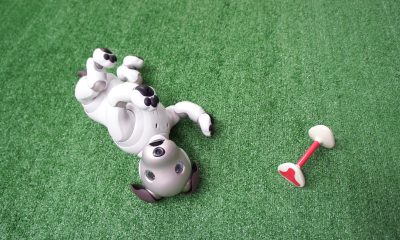Elderly people are at an elevated risk of injuring themselves in a fall. A variety of health problems and age-related changes, affecting balance, bone brittleness, muscle strength, and other factors, all contribute to an elevated risk of serious injury compared to a younger person. Not only are older people more likely to fall, they’re also more likely to sustain injuries like bone fractures as a result of a fall.
An estimated 33% of seniors living in a community setting, like assisted living, suffer from a fall each year. As such, it’s one of the biggest health risks facing older Americans.
Gait Changes and Falling
One of the biggest contributors to falls among seniors is abnormal gait. This means that the motion the person uses to walk is actually deviant from the norm. This can be caused by musculoskeletal problems and low muscle tone, but abnormal gait is also a common neurological symptom.
People with neurological disorders like Parkinson’s disease, dementia, or stroke sequelae, are at the highest risk of falling, and a big part of this ties into changes in gait and posture caused by nervous system damage.

While some abnormal gaits are caused by muscle problems rather than brain injuries, most are neurological. There are eight main subtypes of abnormal gait, all of which greatly increase a person’s risk of a fall related injury.
- Unsteady gaits are distinguished by swaying or loss of balance as a person walks forward.
- Ataxic (cerebellar) gait is caused by damage to areas of the cerebellum, a major brain structure involved in motor function. This gait has a wide base and is very unsteady.
- Neuropathic gaits are caused by peripheral neuropathy, a nerve disorder causing pain, tingling, or loss of sensation in the hands or feet. These patients have a distinctive “foot drop,” and their deep tendon reflexes are often compromised.
- Frontal gait is associated with frontal lobe abnormalities, often associated with stroke or dementia. This gait exhibits short steps, and the person has trouble lifting their feet off of the floor to step forward.
- Parkinsonian gaits, associated with Parkinson’s disease, have a small, shuffling step to them. The person doesn’t swing their arms when walking briskly, as most people do unconsciously.
- Hermiparetic gait involves the person swinging their leg outward in a semicircle, sweeping it around before bringing it to the floor.
- Spastic gait describes a gait where the person’s legs crisscross in front of each other, causing them to trip.
As you can imagine, all of these gait abnormalities interrupt a person’s natural ability to balance themselves while walking. In a recent quantitative study assessing subjects with various kinds of neurological gait impairments, the risk of falling, and of subsequent injuries, was found to be significantly increased.
Consequences of Falls
When a young, healthy person suffers a minor fall, serious injury is relatively rare. In the elderly, bones are at a greater risk of breaking, often having become more brittle over time. Elderly patients are also at a higher risk of complications associated with a broken bone.
Home Safety: Reducing Fall Risk in Seniors
Many seniors meet several risk factor criteria, like neurological impairment, musculoskeletal health issues, and poor vision, which put them at a greater risk of falling.
There are things that can be done, either in an independent living setting or in assisted living, that can help significantly reduce an at-risk senior’s chances of an accidental fall.
- Remove throw rugs and other items that could be tripped over
- Remove or replace low furniture
- Remove and secure cords from the floor
- Make sure there’s good lighting indoors at night, especially for seniors with poor eyesight
- Install grab bars in shower or bath stalls, and alongside toilets
- Use nonslip rubber floor mats
- Install handrails on outdoor ramps and steps
To learn more on senior health and safety, visit Senior Care Center‘s blog here.




